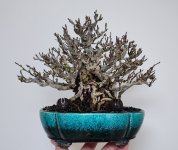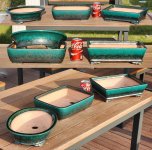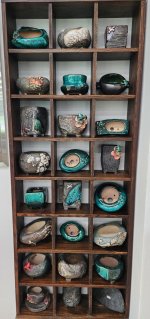Today, I heard a story from someone who knew the original Tongrae potter many years ago.
---
It turns out the Tongrae artist was an independent ceramicist based in the southern region of Korea(Tongnae, Busan).
Several decades ago, most bonsai pots used in Korea were imported from Japan.
Back then, small-scale international trade wasn’t as accessible as it is today, and importers often charged steep markups.
That’s what led the artist to start making bonsai pots himself.
Later, when low-cost pots from China began entering the market, it became difficult for him to compete on price.
To cut costs, he even traveled to China to produce pots there, but the quality just wasn’t the same as when he crafted them in Korea.
From what I’ve heard, if he’s still alive today, he’d be well over 90—perhaps even past 100. So it’s likely that he’s no longer with us.









